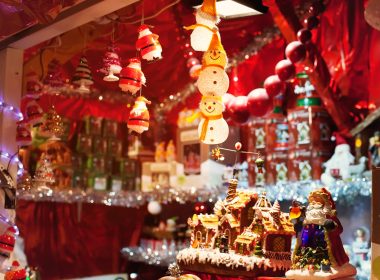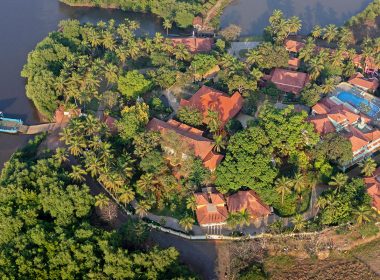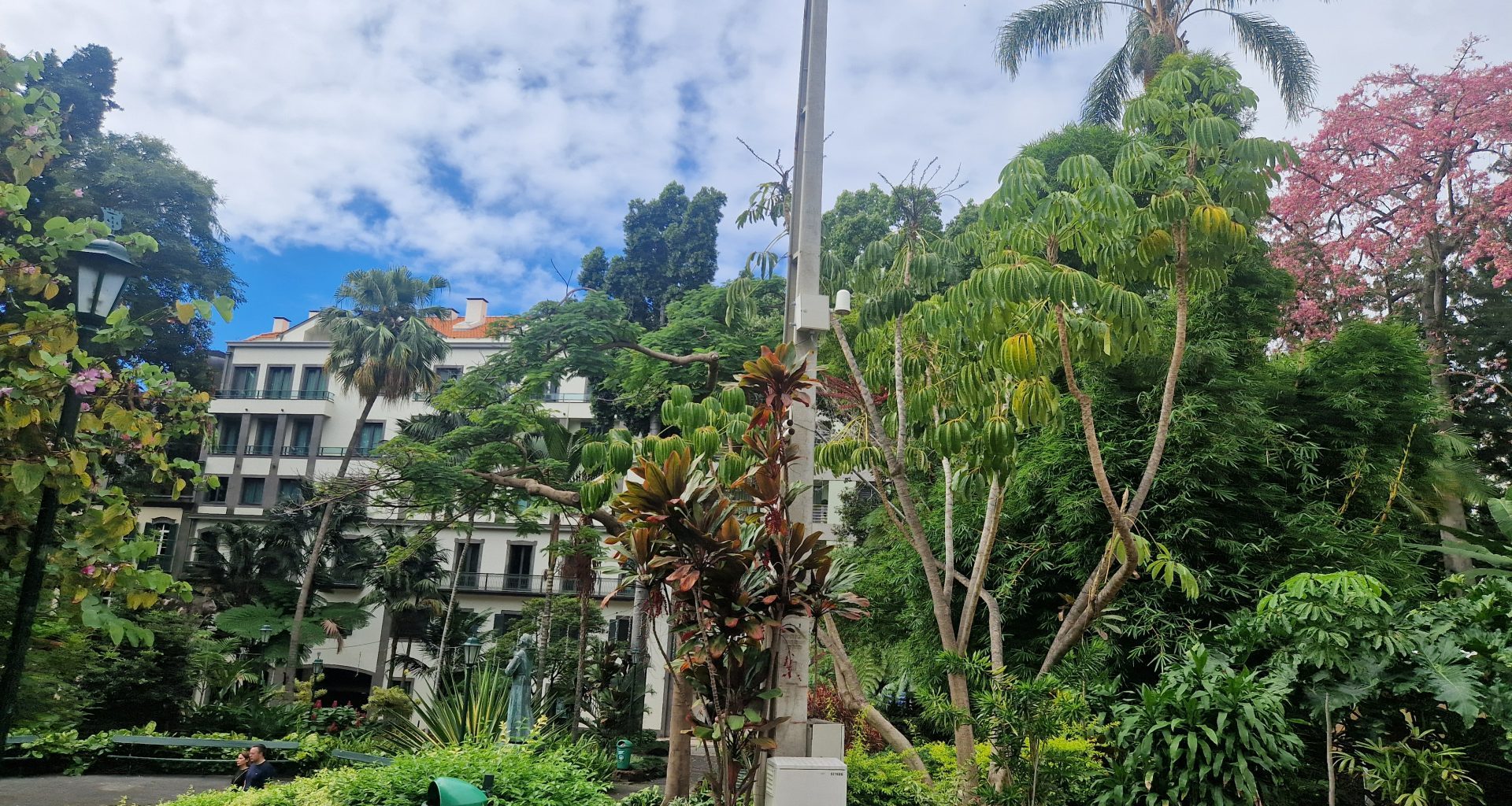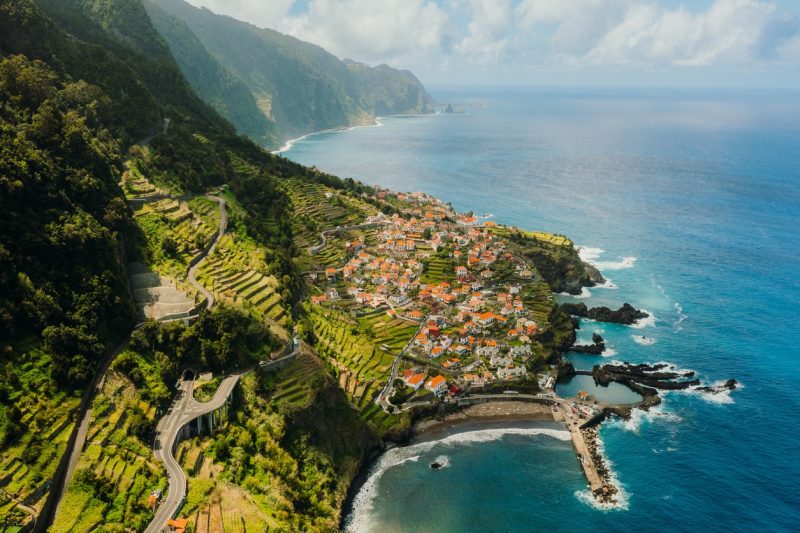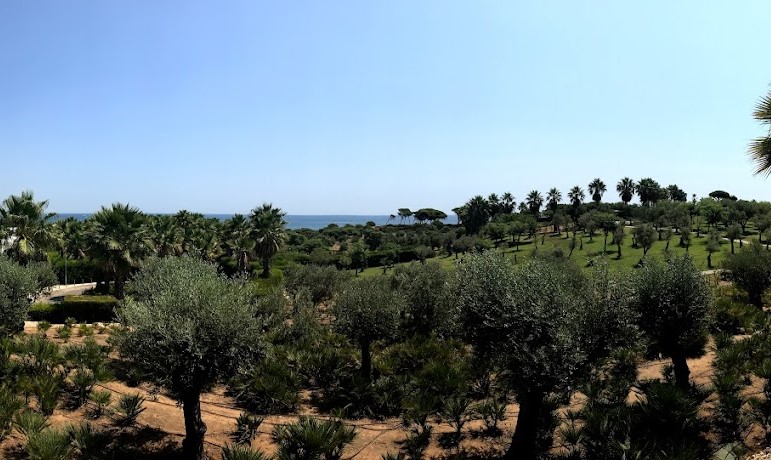“Where to go on vacation in October?” – this is the question I asked myself at the end of September, when most of Europe was getting ready for autumn. The answer came quickly: Madeira, the island of eternal spring, surrounded by the Atlantic Ocean. But this time, I decided to look further – at Madeira’s small, lesser-known neighbor: Porto Santo. The plan was simple – three days on green Madeira and six days on the golden island.
Madeira: where the mountains meet the ocean
We spent the first few days in the São Martinho district, on the outskirts of the capital Funchal. Our modern apartment with a terrace and ocean views seemed perfect – until we discovered that Formosa beach was almost a 20-minute walk downhill. The beach itself, strewn with dark stones, was not inviting for swimming. This is Madeira – beautiful, raw, and wild. Sandy beaches are few and far between, but this is compensated for by nature, which explodes with greenery from every corner.


Along the promenade, there are small restaurants and bars – fish, seafood, the smell of grilled garlic and lemons. In one of them, I tried Bolo de Caco – local sweet potato bread. A sandwich made with this bread and fish was delicious, simple, filling, and aromatic.
In the evening, dinner at the restaurant “Tradicional”(Rua do Cabrestante 19, São Martinho, Funchal, Portugalia) was supposed to be a journey into Madeiran cuisine, but after renovation, the place now offered international-style dishes. Tasty, yes, but lacking the authenticity that can still be found in small villages outside Funchal.
Unfortunately, mass tourism is increasingly flattening the taste of Madeira – this can be seen both on the plate and in the architecture. I tried rice with squid and shrimp here, the dish was tasty, but you can find risotto like this anywhere.


Funchal – a garden in the heart of the Atlantic
On the second day, we headed into the capital. Funchal is a city that smells like the tropics – greenery entwines colonial facades, and plants from all over the world grow on the streets.
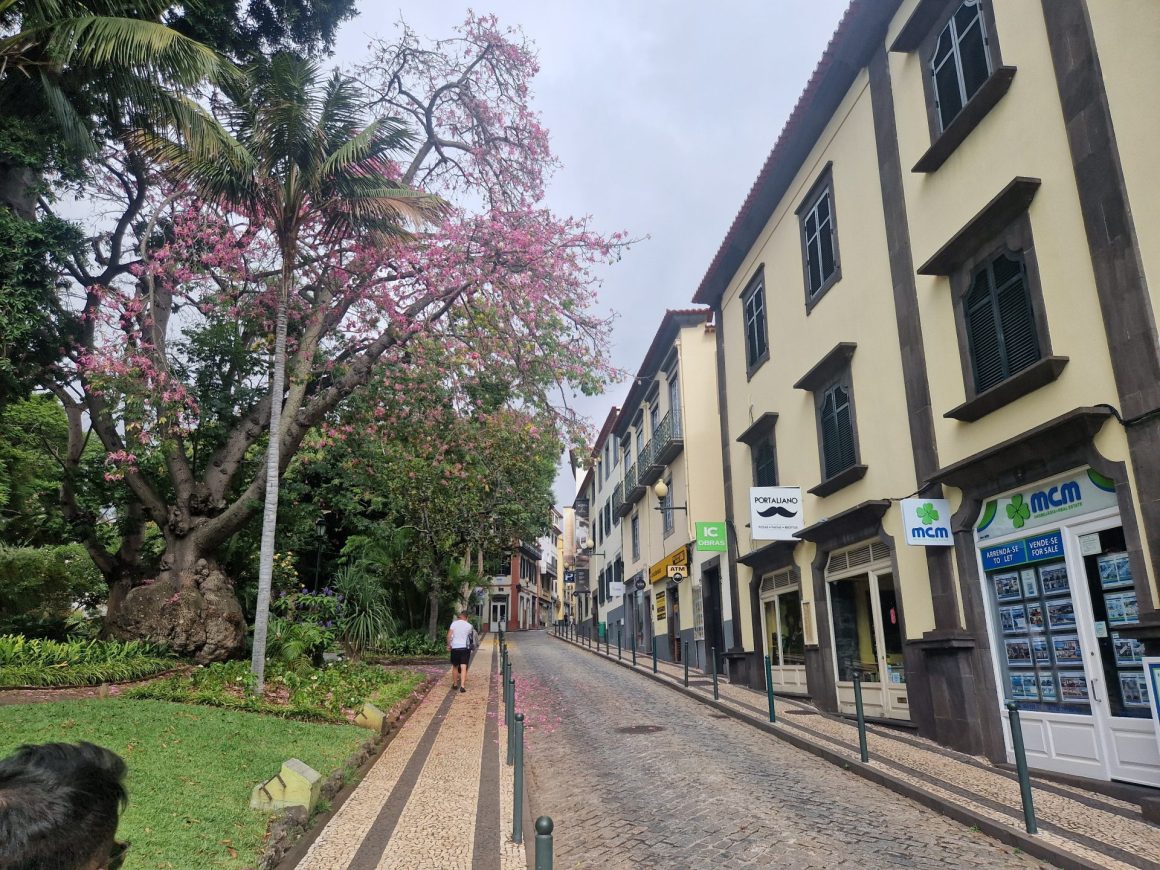

At the Mercado dos Lavradores market, vendors offer exotic fruits – papayas, passion fruits, guavas, mangoes, and even monstera fruits.
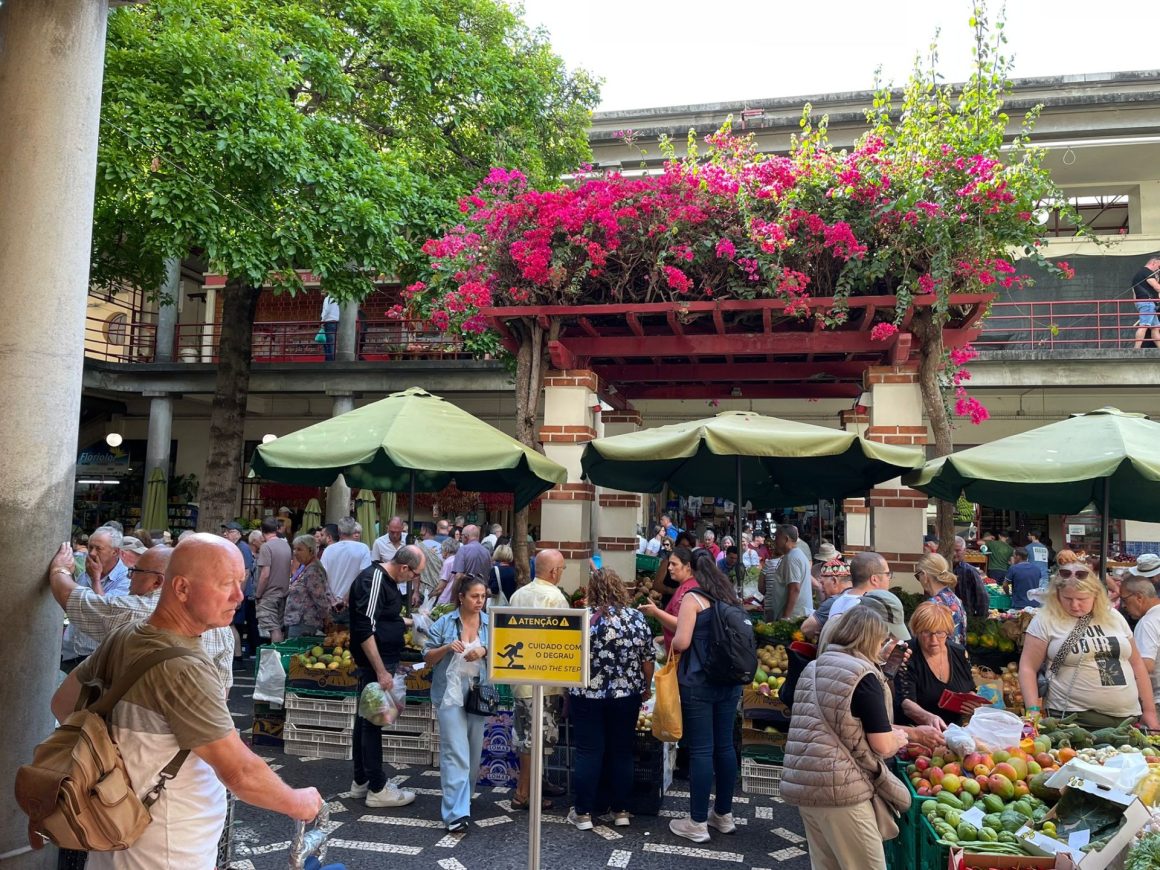

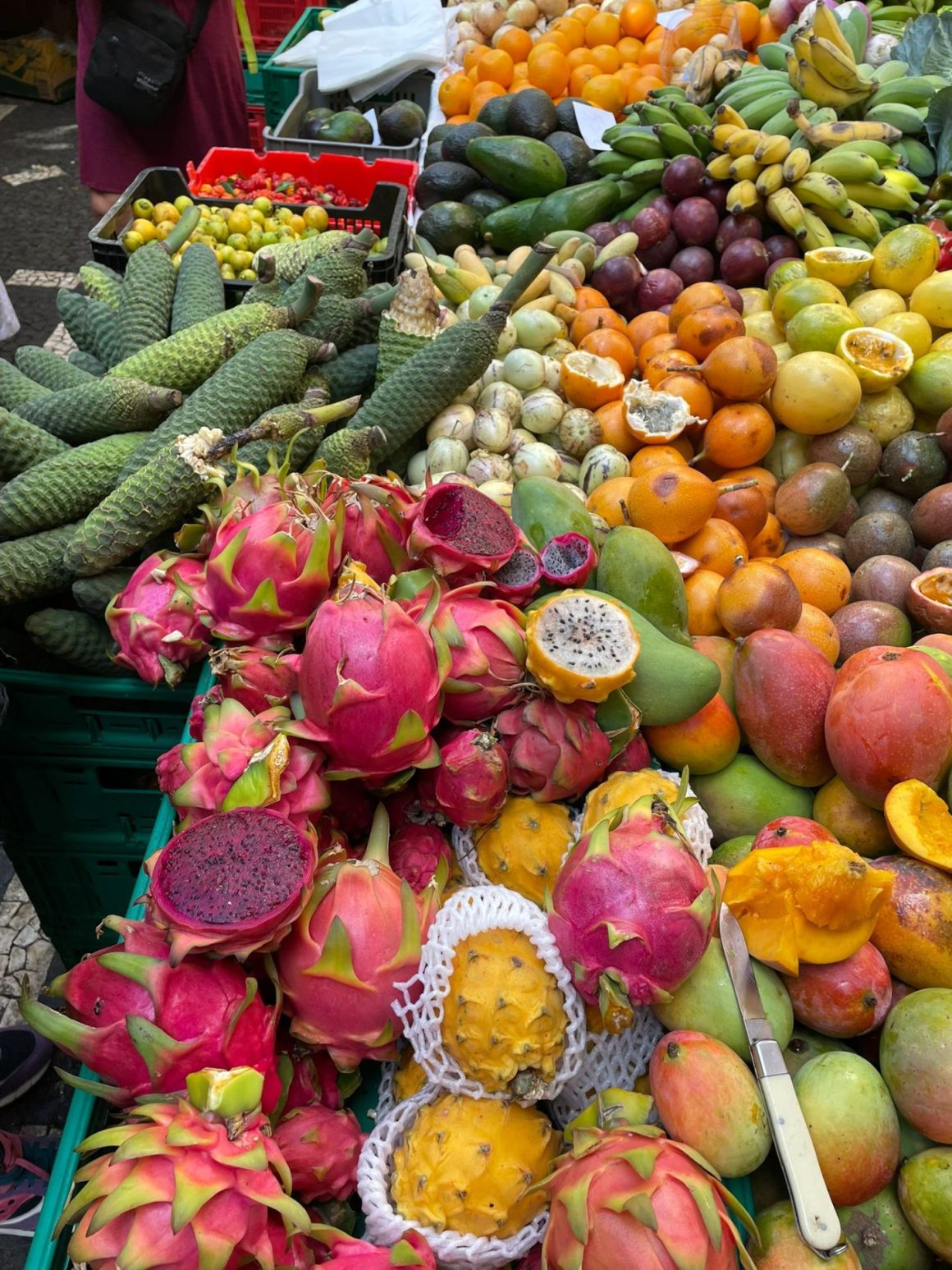

The colors and smells are tempting, but the prices can be surprising. We paid €32 for a few fruits, while at a local stall in another part of the city, we spent only €7 for two kilograms of fresh fruit. It is worth visiting, but it is better to do your shopping elsewhere.
In the evening, we decided to go for dinner at the restaurant “By the Sea” (R. da Praia Formosa, São Martinho, Funchal). This place is considered one of the best in Madeira when it comes to lapas, or rock mussels — a local delicacy of the Macaronesia islands, served in almost every seaside tavern.
When the waiter said that they were fresh today, we had no doubts. We ordered without hesitation.
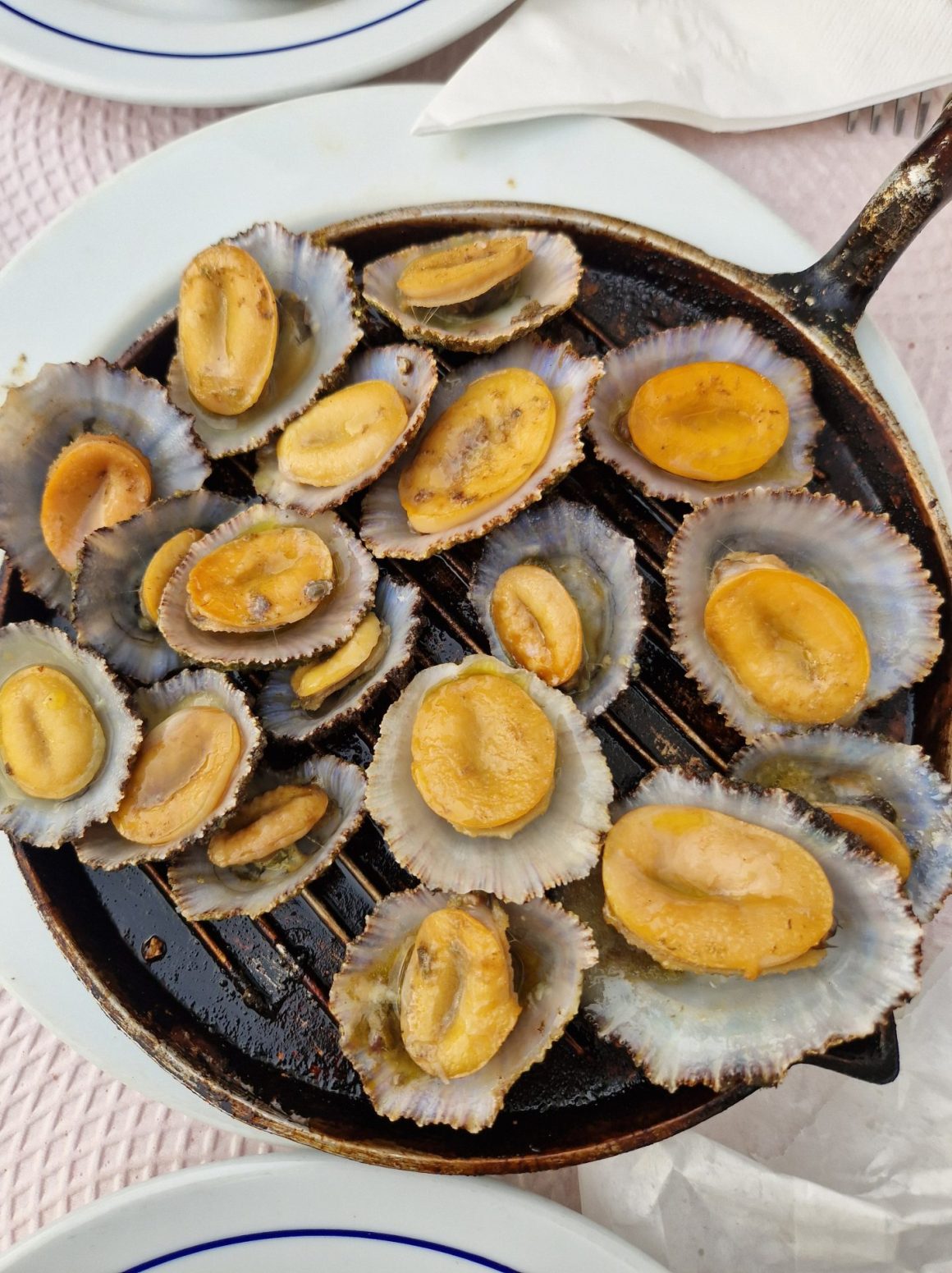

I remembered from my trip to the Azores that it was there that I ate the best limpets — served straight from the pan, bathed in butter and garlic, soft, juicy, with the taste of the ocean and smoke from the grill.
This time, however, it was different. They looked promising in the pan — shiny shells, the aroma of garlic wafting through the air. But the first bite was disappointing. Overcooked, rubbery, dry. Instead of the taste of the sea — the taste of burnt shell.
Later, we learned from the staff that it is becoming increasingly difficult to find local limpets in Madeira. Their population has declined dramatically, so most of the supply now comes from the Azores. However, the time spent in transport and storage causes them to lose their freshness and, with it, all their charm.
So if you are a fan of these seafood delicacies, before you order, ask where they come from.
Towards gold: a ferry trip to Porto Santo
On the third day, in the morning, we headed for the port. The Porto Santo Line cruise takes 2.5 hours – long enough to admire the southern cliffs of Madeira sinking into the ocean from the deck. Most tourists choose a one-day trip, but I knew that Porto Santo deserved more.
The price of a round-trip ticket: €57. The view when the golden shore of the island begins to loom in the distance – priceless.
Porto Santo: silence, gold, and tranquility
Time passes differently in Porto Santo. The nine-kilometer beach stretches like an endless ribbon of golden sand. The ocean is calm here, the water is warm, and the air is dry and clear. Unlike Madeira, the island has a desert-like character – less vegetation, but more space and sun.




We stayed at the Navigator Columbus hotel (Estrada regional 120, Porto Santo, Portugalia) which, after a recent renovation, offers comfortable rooms and an all-inclusive option. 1,000 euros for six days for two people – with an ocean view, three meals a day, and cocktails at sunset.


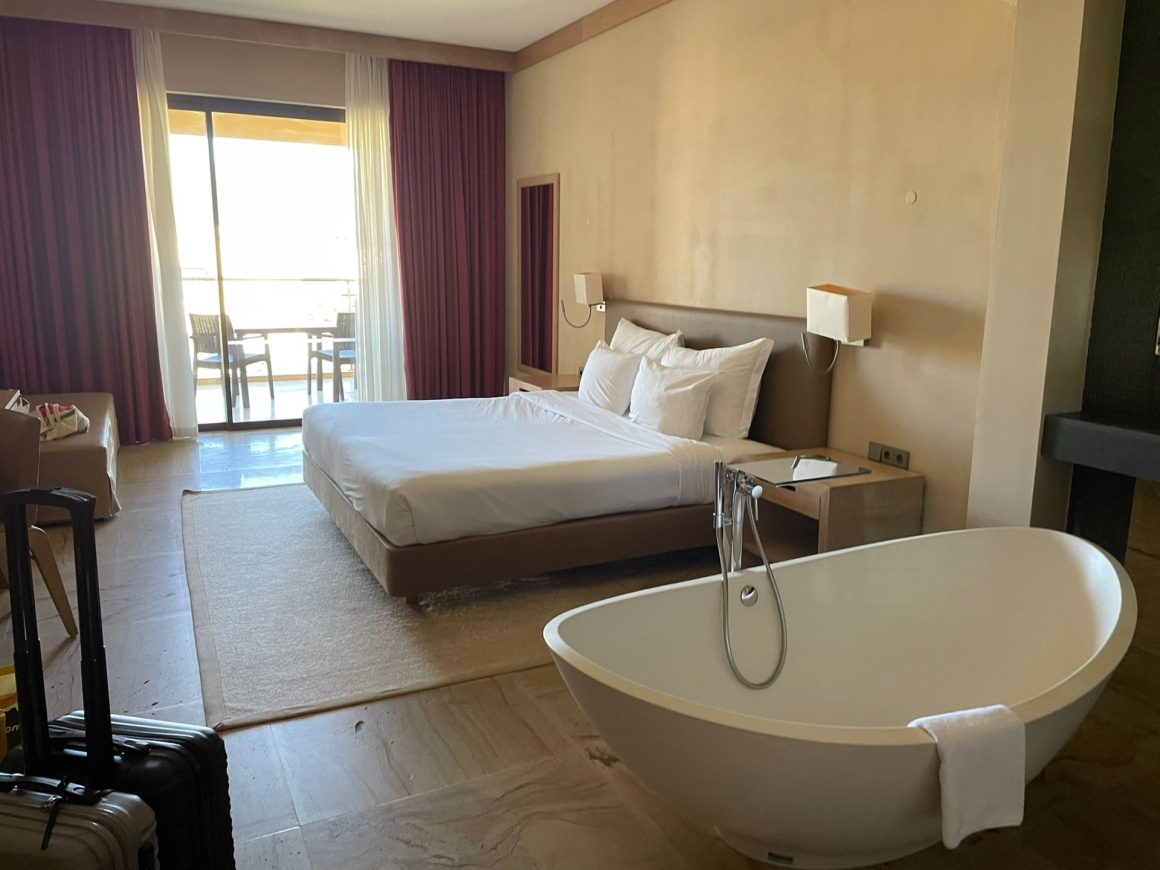

The beach is literally a two-minute walk from the hotel – the perfect place to forget about everything. Generally, hotels and apartments in Porto Santo are cheaper than in Madeira.


What to see in Porto Santo
Although the island is only 11 kilometers long, it offers a surprising variety of landscapes – from golden beaches to volcanic cliffs and green hills.
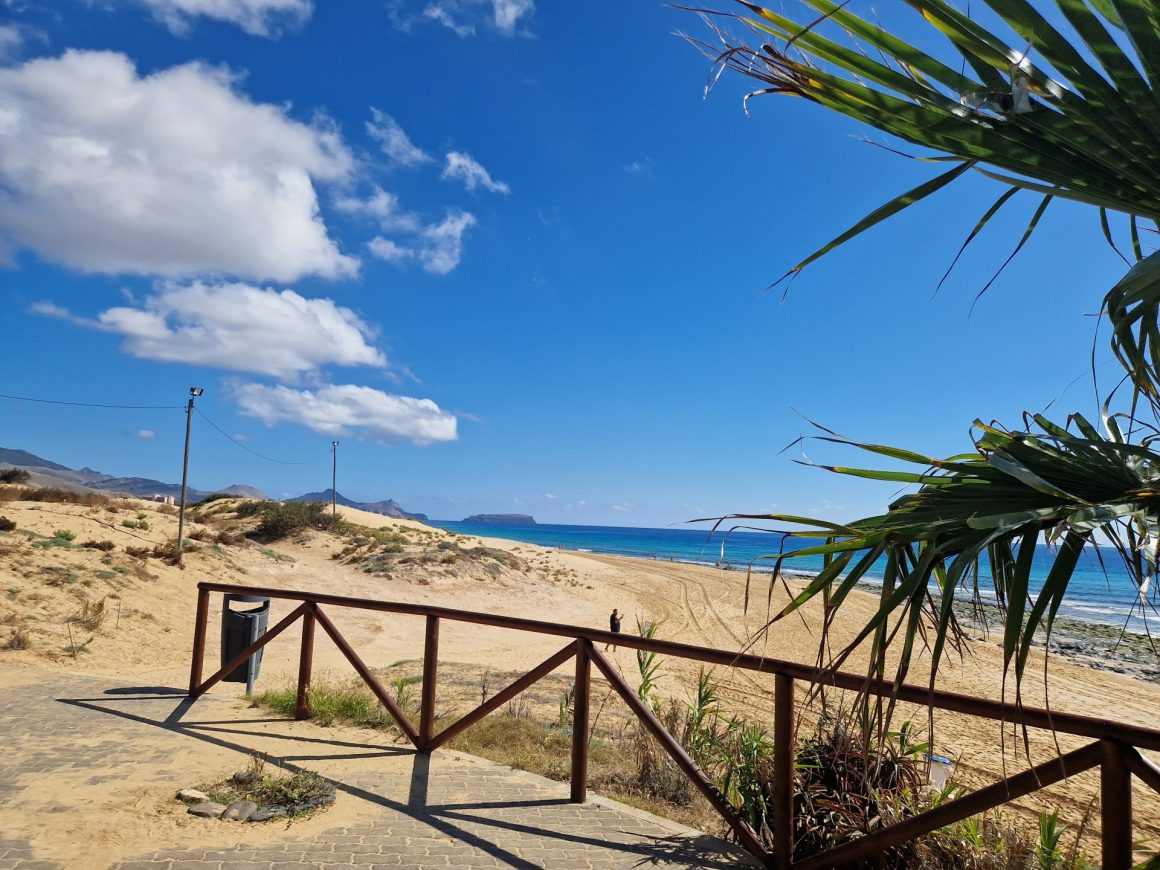

Pico do Castelo (437 m above sea level) – one of the highest points on the island. The trail to the summit leads through dry shrubs and rosemary, and from the top there is a panoramic view of the whole of Porto Santo. On a clear day, you can even see the outline of Madeira.
Pico Ana Ferreira – an unusual rock formation of basalt columns resembling a church organ. It is a remnant of the island’s volcanic past and a must-see for geology enthusiasts.
Casa de Cristóvão Colombo – a small museum in the center of Vila Baleira, where, according to tradition, Christopher Columbus himself lived before setting off to discover the New World. The exhibition shows his connections with the island and the times when Porto Santo was a navigational point for Portuguese sailors.
Miradouro das Flores – a viewpoint on the western tip of the island, where the road ends and the ocean begins. At sunset, it is one of the most magical places in the entire archipelago.
Golden healing sand – Porto Santo beach is known not only for its color but also for its health properties. The sand contains minerals which, according to local research, help treat rheumatic and skin diseases. Local hotels offer special therapeutic sand baths.
Golf and hiking – activity enthusiasts will find perfect conditions for golf (the Porto Santo Golf course designed by Seve Ballesteros) and peaceful treks along the coast.
A walk towards Calheta
One day, we set off on foot towards Praia da Calheta. This place looks like something out of a brochure: turquoise water, fine sand, silence. If the ocean is calm, it is worth diving here – visibility reaches several meters, and the underwater world is full of colors.
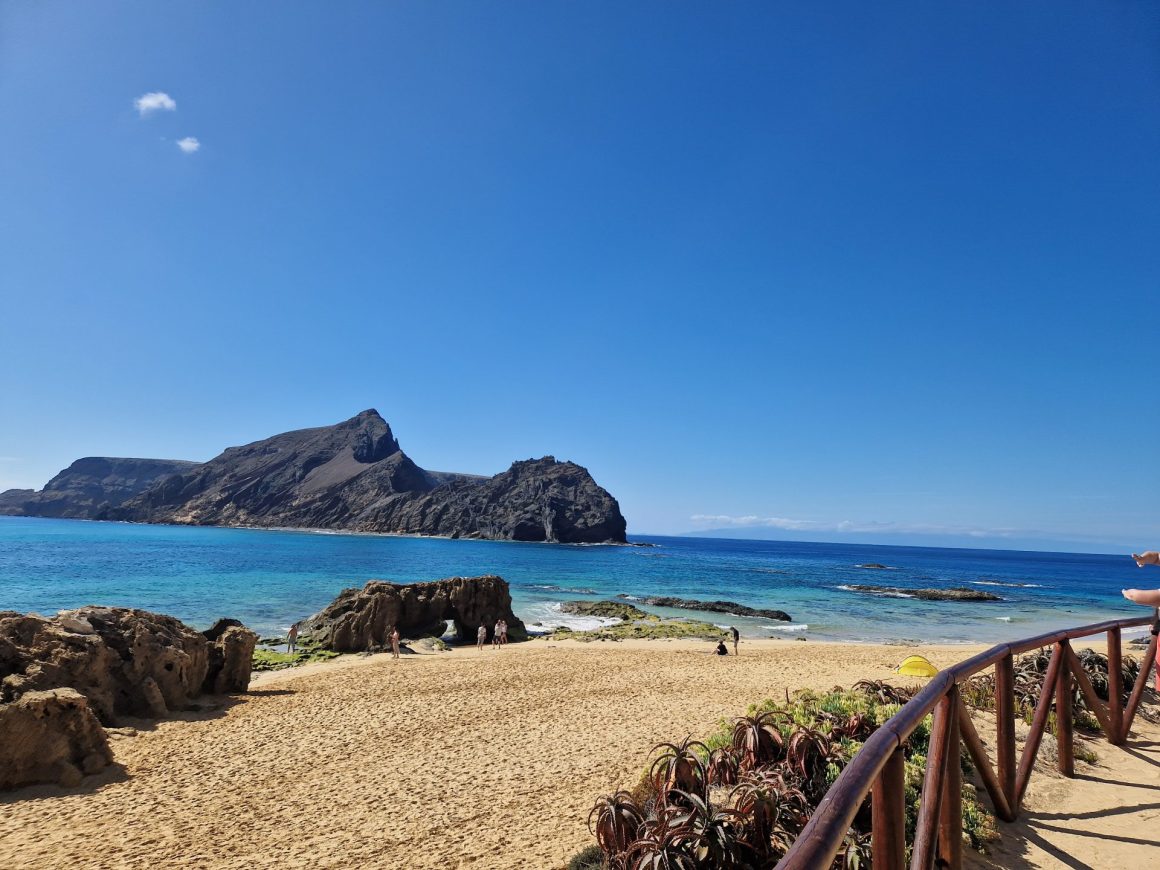

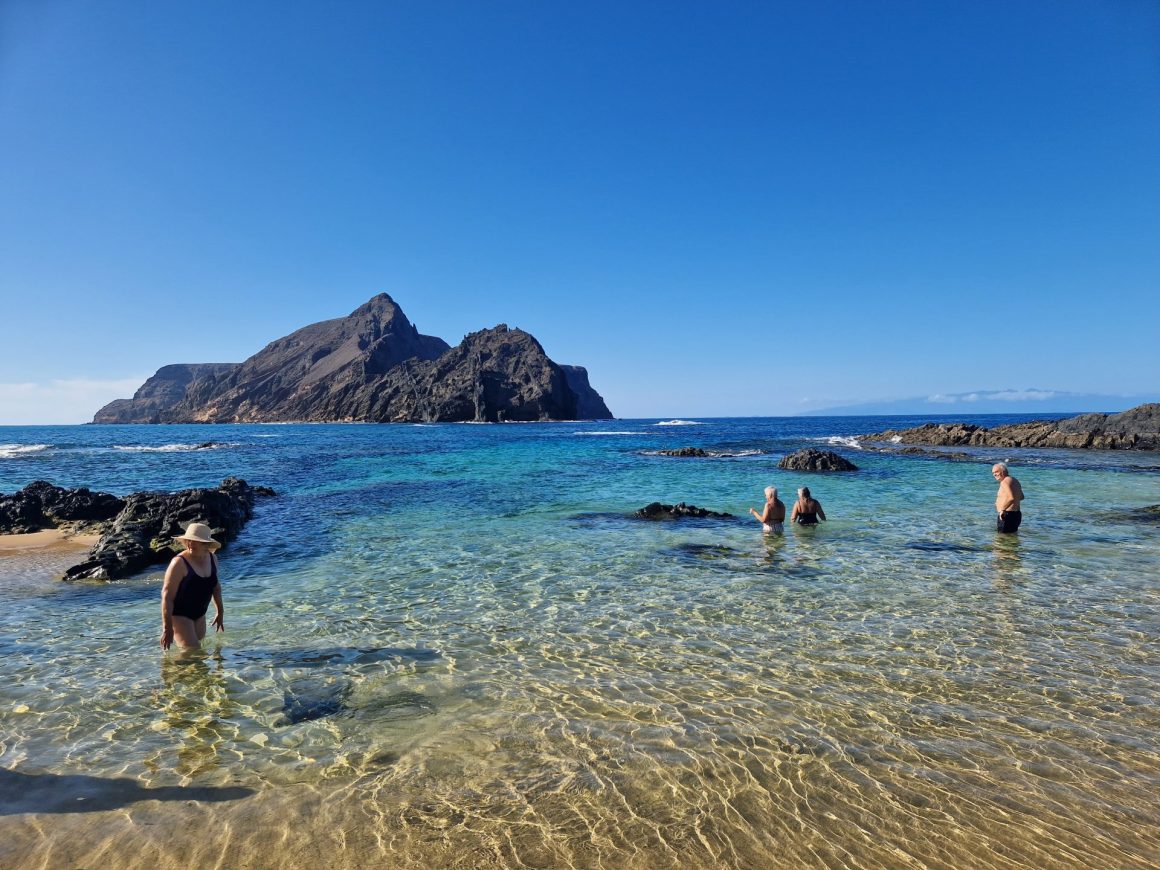

An island that teaches you how to relax
The week on Porto Santo passed unnoticed. Each day ended with a sunset that painted the ocean in shades of gold and purple. This is an island for those who seek peace, nature, and simplicity. You won’t find nightclubs or shopping malls here, but you will find something much more valuable – silence, space, and the rhythm of the ocean.


Two islands, two worlds
Madeira and Porto Santo are like two sisters – one lively, mountainous and full of energy, the other calm, golden and tranquil. Together, they form a duo that allows you to discover the two faces of the Atlantic – the wild and the gentle. Unfortunately, Madeira is becoming overcrowded with tourists every year, losing its charm and atmosphere. Fortunately, Porto Santo has not yet been destroyed by mass tourism.



